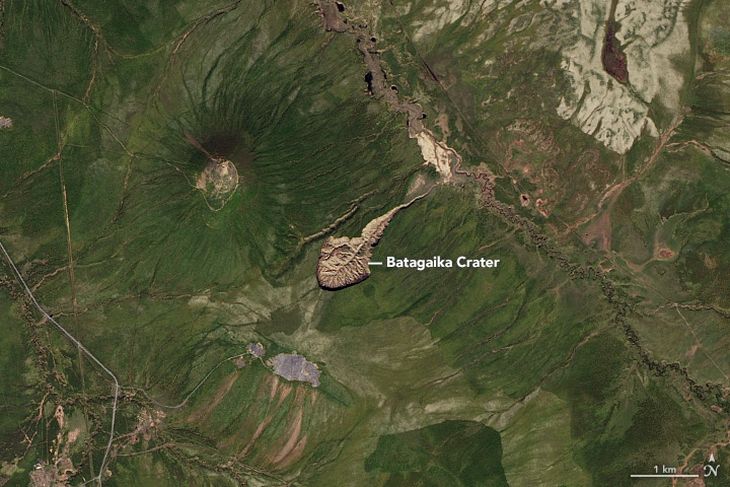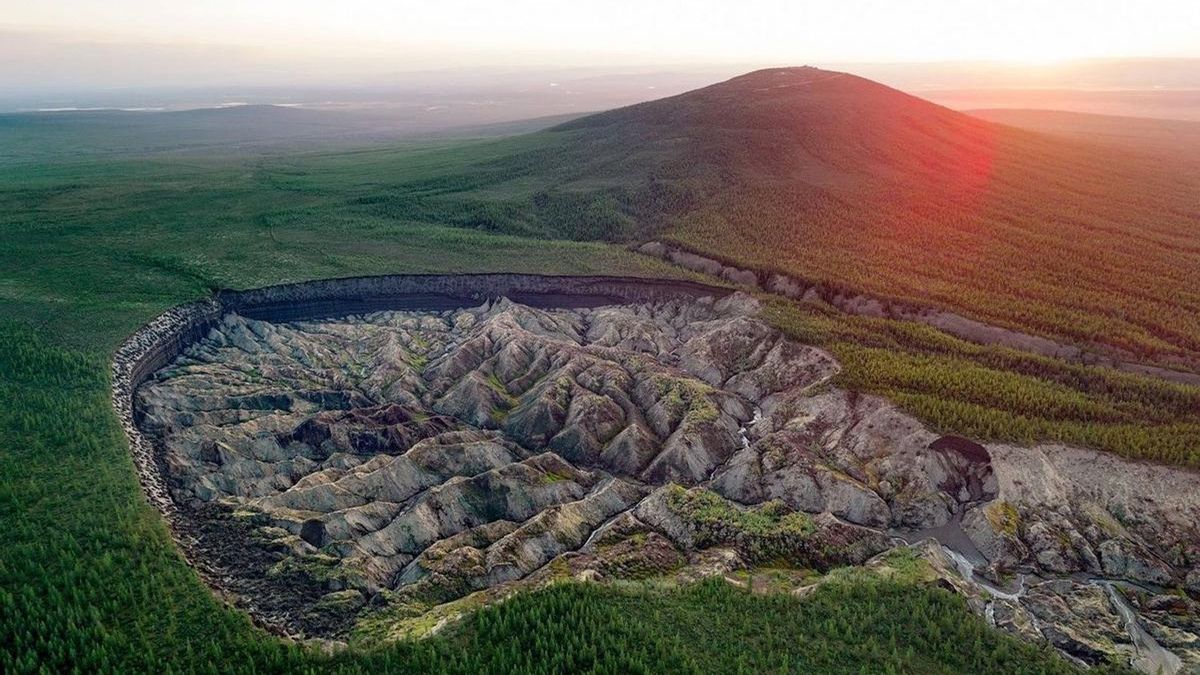An impressive video recorded with a drone revealed details of the batagaika cratera kilometer-long hole in the Russian Far East constituting the largest permafrost crater in the world.
In the video, two explorers climb rugged terrain at the base of the depression, marked by uneven surfaces and small mounds, which began to form after the surrounding forest was cleared in the 1960s and the underground permafrost will begin to melt, causing the land to subside.
“We locals call it the landslide”he explained to Reuters Erel Struchkov, local resident and explorer of the crater, from the rim of the crater. “It developed in the 1970s, first as a ravine. Then, as it thawed in the heat of sunny days, it began to spread.”
permafrost russia (1).jpg
Scientists say Russia is warming at least 2.5 times faster than the rest of the world, melting the frozen tundra that covers about 65% of the country’s land mass and releasing greenhouse gases stored in the frozen ground.
The “gate to the underworld”as some inhabitants of the Russian Sakha Republic also call it, has a scientific name: megathaw.
And while it may attract tourists, its expansion is “a sign of danger”it states Nikita Tananaevsenior researcher at the Yakutsk Melnikov Institute of Permafrost.
“In the future, with rising temperatures and increased anthropogenic pressure, we will see more and more such mega-potholes form, until all the permafrost disappears,” Tananayev told Reuters.
permafrost russia (3).jpg

Melting permafrost has already threatened cities and towns in northern and northeastern Russia, bulging roads, splitting houses and disrupting oil and gas pipelines. Large forest fires, more intense in recent seasons, aggravate the problem.
Scientists are unsure of the exact rate of expansion of the Batagaika crater. But Tananayev says the ground under the collapse, some 100 meters deep in some areas, contains a “huge amount” of organic carbon to be released into the atmosphere as permafrost thaws, further exacerbating global warming.
“With increasing air temperatures, we can expect (the crater) to expand at a higher rate,” he said. “This will cause increasing climate warming in subsequent years.”
Source: Ambito




